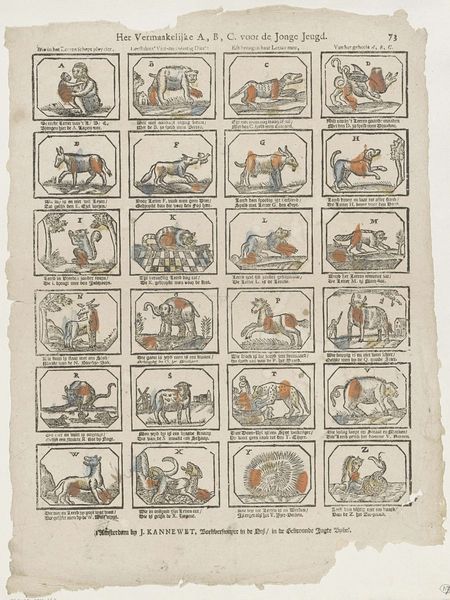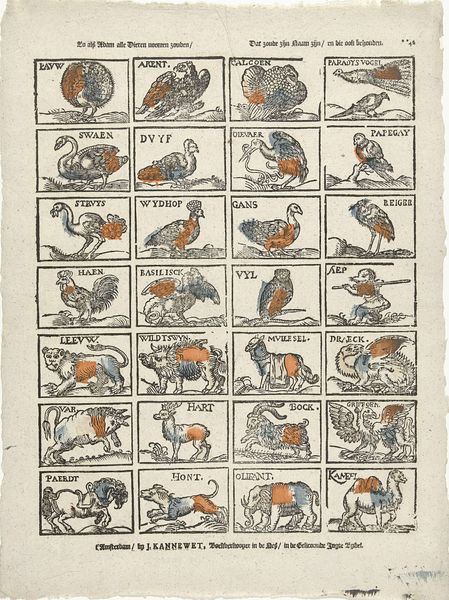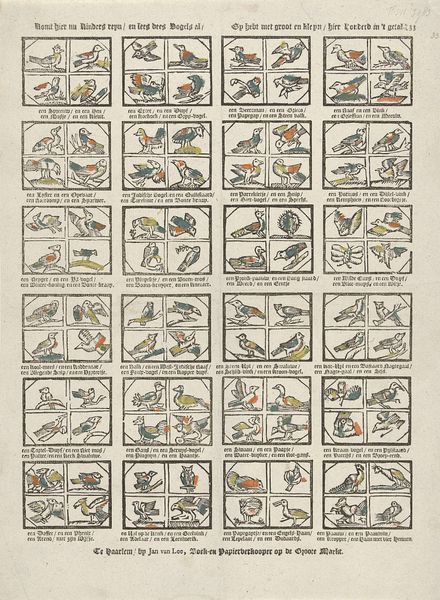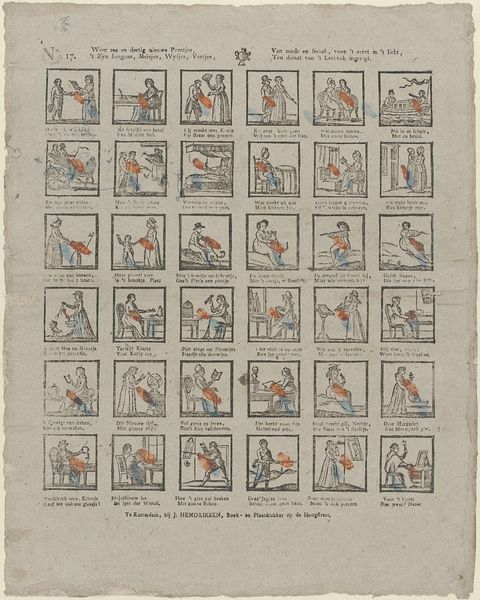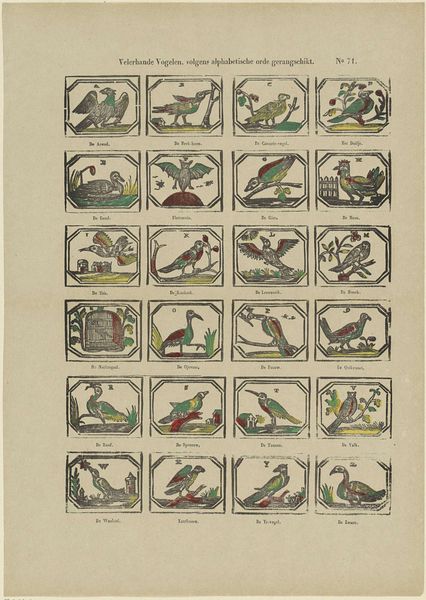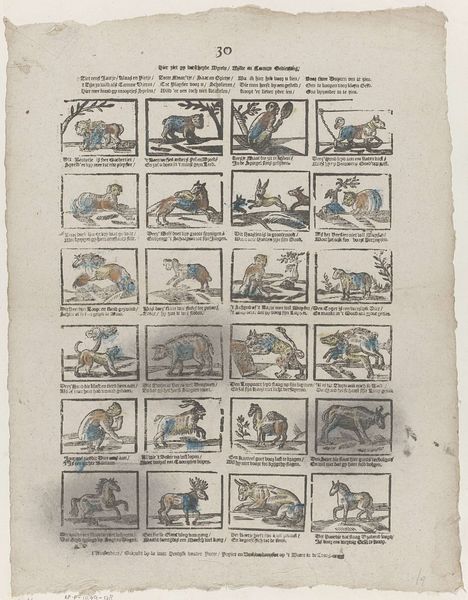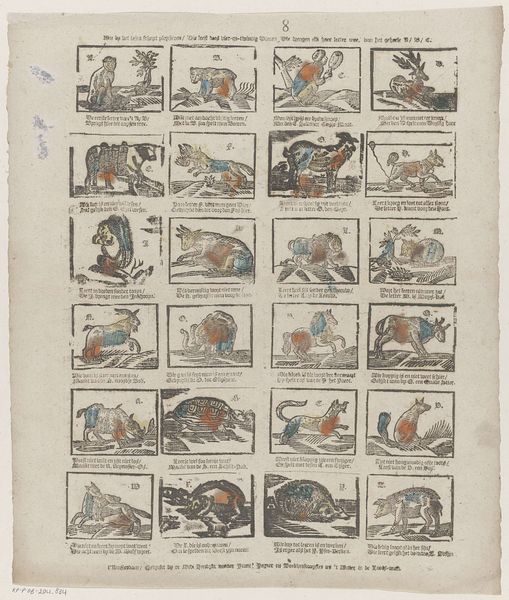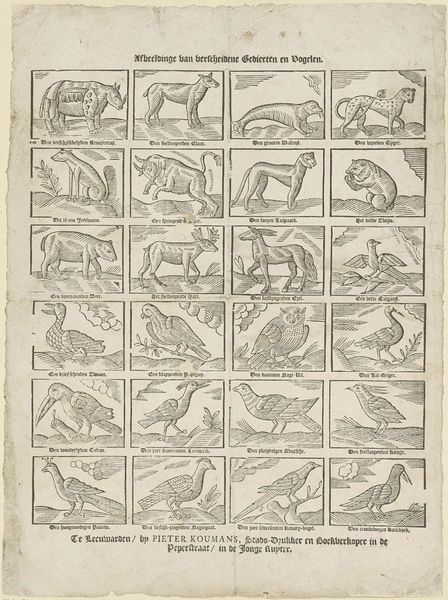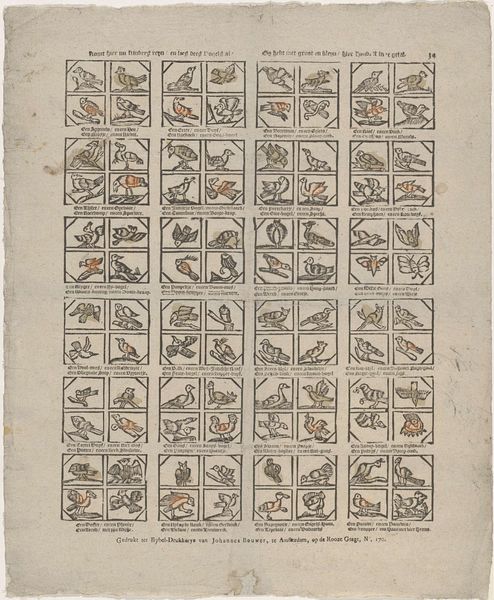
Kinderen siet dees Vogels aan / en wilt uw vlijd vermeeren / Soo sult gy vroolyk eer gy 't weet / 't A / B / al speelent leeren 1738 - 1767
0:00
0:00
gijsbertdegrootkeur
Rijksmuseum
drawing, graphic-art, print, woodcut
#
drawing
#
graphic-art
#
medieval
# print
#
bird
#
folk-art
#
woodcut
Dimensions: height 400 mm, width 312 mm
Copyright: Rijks Museum: Open Domain
Curator: Look at the texture on this print – it has a raw, almost naive quality that I find very appealing. Editor: And what we’re looking at is “Kinderen siet dees Vogels aan…,” a fascinating piece of graphic art, a woodcut drawing to be precise, created sometime between 1738 and 1767 by Gijsbert de Groot Keur. It resides here at the Rijksmuseum. Curator: The title, loosely translated, is "Children, look at these birds...", I think that sentiment resonates strongly. What immediately grabs my attention is the material process. It appears to be block printed, probably with a readily available wood, given the fairly rough cut lines. The colour seems applied afterwards, not an integral part of the printing, which I am fascinated by from a labour perspective – each sheet touched individually, made unique, yet produced to instruct, disseminate learning through mass reproduction, that intersection intrigues me! Editor: It's also striking how the birds are arranged in these neat, gridded boxes almost like tiles, each labeled with a letter. These grids and labelling points to the art's intended use for learning and alphabets, as children were able to learn about these avians. But, if we examine these representations through the lens of institutional power, were these animals truly known and understood by its Dutch audiences, or was it simply the illusion of familiarization with nature being reproduced to create and promote ideas of Dutch mastery, maybe control? It highlights that power dynamic inherent in educational tools of the era. Curator: That tension, that ambiguity, between simple charm and socio-political imposition really fascinates me and echoes broader debates on the meaning of 'folk art'. It pushes us to ask what we're celebrating - genuine vernacular expression, or manufactured national identity. Editor: Exactly! This unassuming children's print prompts us to confront the complex layers of history embedded within even the simplest of images. Curator: It's more than just pretty pictures of birds; it's a material trace of pedagogical techniques and potential nationalistic construction. Editor: Agreed, it seems a modest piece, but contains all this richness within it, and can offer an incisive commentary on the visual landscape of 18th-century Netherlands.
Comments
No comments
Be the first to comment and join the conversation on the ultimate creative platform.

